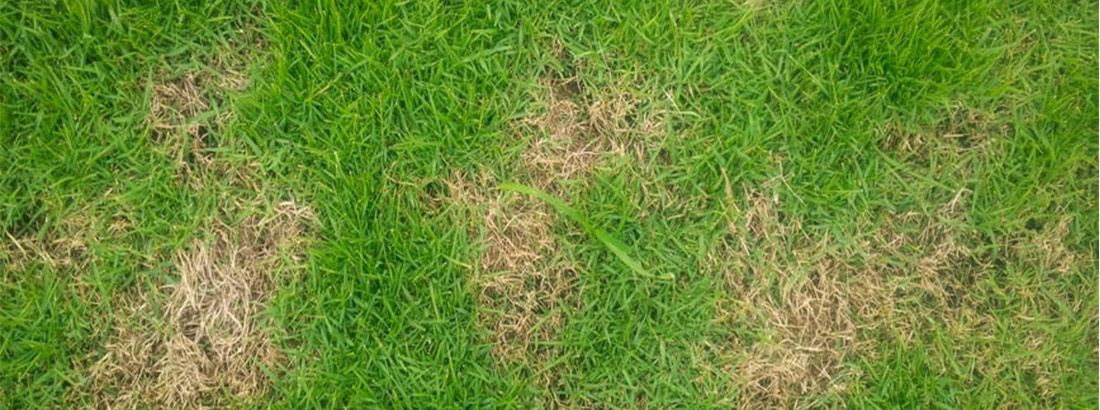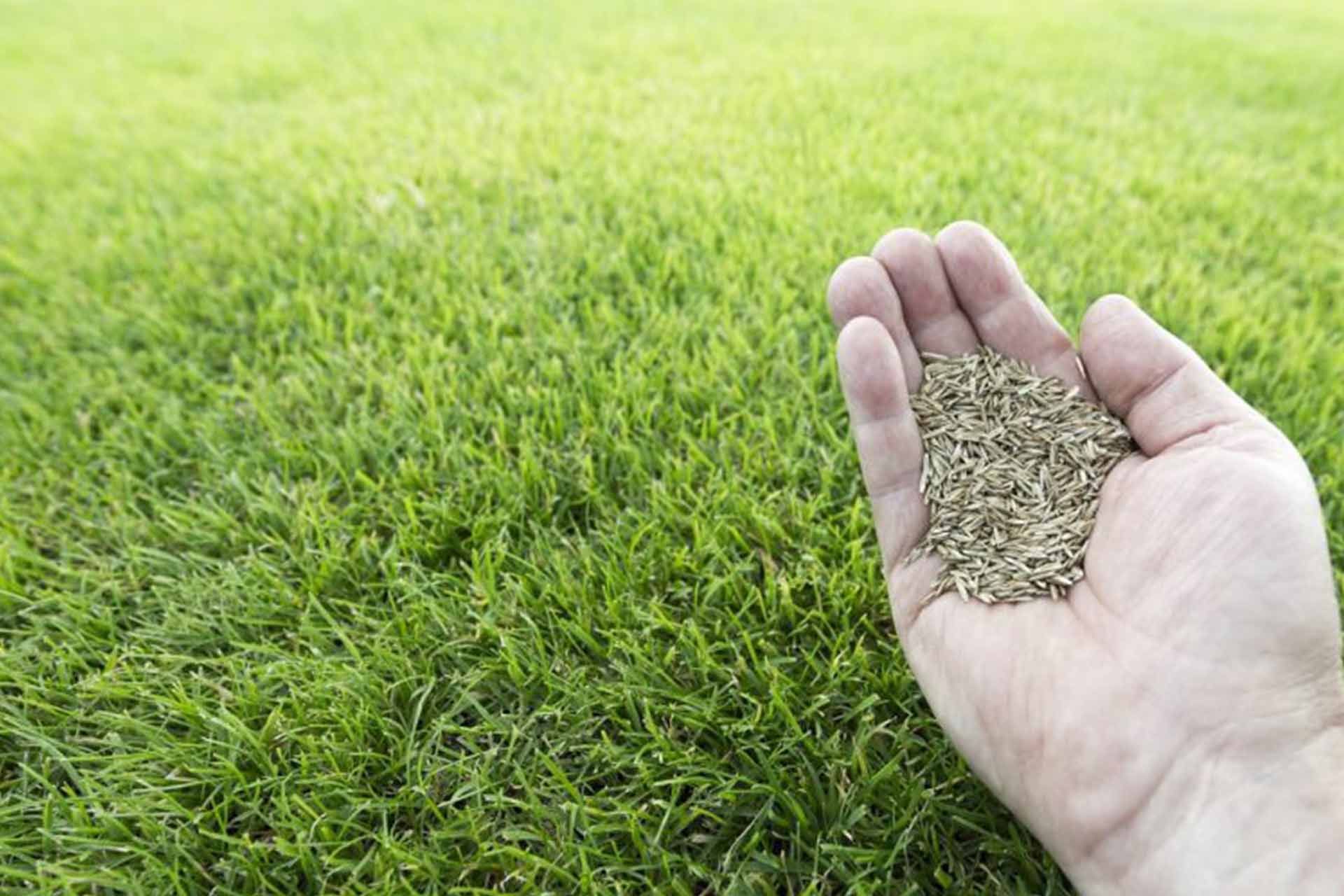VETERAN OWNED
Mar 21, 2024
Mastering Lawn Care: Your Guide to Achieving a Pest-Free Lawn in 2024
A well-kept lawn not only enhances the aesthetic appeal of your property but also provides a safe and enjoyable space for your family and friends. However, pesky lawn pests can quickly turn your dream lawn into a nightmare. This comprehensive guide will explore effective strategies and expert tips to help you achieve a pest-free lawn in 2024. With Visionary Fertilization, a trusted provider of lawn care solutions, you can enjoy a lush, healthy, and pest-free lawn year-round.
Understanding Lawn Pests
To effectively combat lawn pests, it's crucial to understand their behavior and the potential damage they can cause. Lawn pests can include insects, rodents, and other small animals that invade and damage your lawn. They can feed on grass, roots, and plants, leading to yellowing, thinning, and even death of your lawn. Additionally, some pests can carry diseases and pose a threat to the health of your family and pets. Identifying and addressing pest infestations early on is key to maintaining a pest-free lawn.
Common Types of Lawn Pests
Several types of pests can wreak havoc on your lawn. Understanding their habits and characteristics will help you develop effective pest control strategies. Here are some common lawn pests you may encounter:
- Grubs: These white, C-shaped larvae of beetles, such as Japanese beetles and June bugs, feed on grass roots, causing brown patches and weakened turf.
- Ants: Ants can build extensive underground colonies in your lawn, disrupting soil structure and potentially causing damage to plants and grass.
- Chinch Bugs: These tiny insects extract sap from grass blades, causing yellow or brown patches in your lawn.
- Moles and Voles: These burrowing animals can create unsightly tunnels and damage grassroots, leading to dead patches in your lawn.
- Ticks: Ticks can transmit diseases to humans and pets and are often found in tall grass and wooded areas.
- Fleas: Fleas can infest your lawn if you have pets, causing discomfort and potential health risks.
- Mosquitoes: Mosquitoes breed in standing water and can quickly multiply, making outdoor living spaces unpleasant.
Signs of Pest Infestation
Detecting the presence of pests in your lawn early on is essential for effective pest control. Here are some signs that indicate a potential pest infestation:
- Brown or Yellow Patches: Patches of dead or discolored grass can indicate the presence of pests, such as grubs or chinch bugs.
- Tunnels or Mounds: Burrowing pests like moles and voles create tunnels or mounds of soil, disrupting the smooth surface of your lawn.
- Visible Pest Activity: Spotting pests, such as ants or fleas, crawling on your lawn or around your home clearly indicates an infestation.
- Unexplained Lawn Damage: If your lawn is healthy overall but shows localized damage, it may be due to specific pests feeding on the grass or roots.
Importance of Maintaining a Pest-Free Lawn
A pest-free lawn offers numerous benefits for both you and your property. Here's why it's important to prioritize pest control in your lawn care routine:
- Health and Safety: Many lawn pests can carry diseases or cause allergic reactions. Keeping pests at bay creates a safer environment for your family and pets to enjoy outdoor activities.
- Lawn Appearance: Pests can cause significant damage to your lawn, resulting in unsightly brown patches, thinning grass, and dead areas. A pest-free lawn enhances the overall appearance of your property, increasing curb appeal and property value.
- Plant Health: Pests can feed on plants and flowers, hindering their growth and potentially killing them. Preventing pest infestations protects your plants and ensures their healthy development.
- Reduced Chemical Usage: A well-maintained, pest-free lawn requires fewer chemical treatments, reducing your environmental impact and promoting a more sustainable approach to lawn care.
Impact on Lawn Health and Appearance
Pest infestations can have a detrimental impact on the health and appearance of your lawn. Here are some common ways pests can affect your lawn:
- Stunted Growth: Pests like grubs and chinch bugs can feed on grass roots, inhibiting their ability to absorb nutrients and water, leading to stunted growth and thinning patches.
- Yellowing or Browning: Some pests, such as chinch bugs or fungal diseases spread by ticks, can cause yellowing or browning of grass blades, resulting in an unhealthy and unsightly lawn.
- Dead Patches: Pests like grubs and moles can dig tunnels, damaging grassroots and resulting in dead patches in your lawn.
- Weeds and Invasive Plants: Pest-infested lawns are often more susceptible to weed growth, as pests disrupt the ecosystem's natural balance, allowing weeds to flourish.
Prevention of Damage to Grass and Plants
Prevention is the first line of defense against lawn pests. By implementing proactive measures, you can minimize the risk of pest infestations and protect the health of your grass and plants. Here are some tips for preventing damage caused by pests:
- Maintain Good Lawn Health: A healthy lawn is more resilient to pest infestations. Regularly fertilize, water, and mow your lawn to keep it strong and vigorous.
- Remove Clutter: Clear your lawn of debris, fallen leaves, and excess grass clippings, as they can create hiding spots for pests and provide a breeding ground for fungi and insects.
- Promote Proper Drainage: Ensure your lawn has proper drainage to prevent standing water, which attracts pests like mosquitoes and can lead to fungal diseases.
- Trim Trees and Shrubs: Trim trees and shrubs near your lawn to prevent their branches from touching the grass, as this can provide a bridge for pests to access your lawn.
Tips for Keeping Your Lawn Pest-Free
Maintaining a pest-free lawn requires a combination of preventive measures, regular maintenance, and strategic pest control strategies. Here are some expert tips to help you achieve a pest-free lawn in 2024:
Regular Lawn Maintenance
Regular lawn maintenance prevents pest infestations and promotes a healthy lawn. Follow these practices to keep your lawn in top condition:
- Proper Mowing Techniques: Set your mower blades to the recommended height for your grass type and avoid cutting more than one-third of the grass blade length at a time. Mow regularly to keep your lawn at an appropriate height, discouraging pests and promoting healthy growth.
- Effective Watering Practices: Water deeply and infrequently to encourage deep root growth and make your lawn less attractive to pests. Water early in the morning to allow the grass to dry before nightfall, reducing the risk of fungal diseases.
- Regular Weed Control: Weeds can provide shelter and food for pests, so removing them regularly is important. Use manual or chemical weed control methods to keep your lawn weed-free.
Integrated Pest Management (IPM) Strategies
Integrated Pest Management (IPM) is a holistic approach to pest control that combines preventive measures, cultural practices, and targeted treatments. Implement the following IPM strategies for effective pest management:
- Identify and Monitor Pests: Regularly inspect your lawn for signs of pest activity. Identify the specific pests present and monitor their population levels to determine the need for intervention.
- Cultural Controls: Implement cultural practices that discourage pests, such as promoting good soil health, maintaining proper lawn care practices, and using pest-resistant grass varieties.
- Biological Controls: Encourage natural pest predators, such as birds, ladybugs, and nematodes, in your lawn. These beneficial organisms can help control pest populations naturally.
- Mechanical Controls: Use physical barriers, traps, or handpicking methods to remove pests from your lawn manually.
Natural Pest Control Methods
If you prefer to use natural methods to control pests in your lawn, several eco-friendly options are available. Consider the following natural pest control methods:
- Beneficial Nematodes: These microscopic worms can be applied to your lawn to control pests like grubs and chinchbugs.
- Essential Oils: Certain essential oils, such as neem or peppermint, have repellent properties and can deter pests from your lawn.
- Soap and Water Solution: A mixture of mild dish soap and water can be used to control pests like aphids and mites. Spray the solution directly on the affected plants.
- Diatomaceous Earth: This natural powder, made from fossilized algae, can be sprinkled on your lawn to control crawling pests like ants, fleas, and ticks.
Lawn Fertilization for Pest Prevention
Proper lawn fertilization is crucial in maintaining a healthy and pest-free lawn. Consider the following factors when fertilizing your lawn:
- Importance of Balanced Soil Nutrition: A well-balanced soil with optimal levels of nutrients promotes healthy grass growth and makes your lawn less vulnerable to pest infestations.
- Choosing the Right Fertilizer Products: Select fertilizers specifically formulated for your grass type and your lawn needs. Look for slow-release or organic fertilizers that provide long-term nutrition without excessive growth spurts.
- Application Timing and Techniques: Follow the fertilizer packaging's recommended application rates and timing instructions. Apply fertilizer evenly and avoid excessive or uneven distribution, as this can lead to nutrient imbalances and potential pest problems.
Seasonal Pest Control Measures
Pest control needs vary throughout the year, as pests have different life cycles and behaviors. Implement seasonal pest control measures to address specific pest challenges:
Spring: Preventing Grub Infestations
Spring is when grubs, the larvae of beetles, become active. Take the following steps to prevent grub infestations:
- Inspect for Grub Damage: Look for signs of grub damage, such as brown patches or loose turf, and treat affected areas promptly.
- Apply Grub Control Products: Consider applying a targeted grub control product to prevent grub infestations. Follow the instructions provided and apply at the appropriate time for maximum effectiveness.
Summer: Managing Surface-Feeding Pests
Summer brings surface-feeding pests like chinch bugs and ants. Use the following strategies to manage these pests:
- Monitor for Chinch Bug Activity: Check for chinch bug nymphs or adults on your lawn. Treat affected areas with appropriate insecticides if necessary.
- Ant Baits and Barriers: Place ant baits or create physical barriers to prevent ants from entering your lawn. Trim trees and shrubs near your lawn to prevent ants from using them as access points.
Fall: Protecting Against Overwintering Insects
Fall is the time when many pests prepare for overwintering. Take the following steps to protect your lawn from overwintering insects:
- Remove Debris: Clean up fallen leaves, branches, and other debris that can provide shelter for overwintering pests.
- Apply Insecticidal Soap: Use insecticidal soap to control overwintering insects like aphids, mites, and scale insects. Follow the instructions provided and apply when pests are active.
Winter: Preparing for Spring Emergence
Winter is the ideal time to prepare your lawn for the upcoming spring. Take the following steps to ensure a healthy, pest-free lawn:
- Winterize Your Lawn Equipment: Clean and store your lawn equipment properly to prevent the spread of pests or diseases.
- Improve Soil Health: Apply a winterizing fertilizer to promote strong root growth and improve soil health during winter.
Visionary Fertilization: Your Partner in Pest-Free Lawn Care

Maintaining a pest-free lawn can be challenging, but with the help of professionals like Visionary Fertilization, you can achieve outstanding results. Visionary Fertilization is a trusted customized lawn care solution provider specializing in pest control and lawn fertilization services. Their expertise and personalized approach can help you achieve a pest-free lawn in 2024 and beyond.
Customized Lawn Fertilization Services
Visionary Fertilization offers customized lawn fertilization services tailored to the specific needs of your lawn. Their experts will assess your lawn's nutrient requirements and develop a fertilization plan that promotes healthy growth and pest resistance
Expert Pest Control Solutions
In addition to fertilization services, Visionary Fertilization provides expert pest control solutions to address specific lawn pest challenges. Their trained technicians have extensive knowledge of local pests and can implement targeted treatments to protect your lawn from infestations.
A pest-free lawn is within your reach with the proper knowledge and strategies. By implementing the tips and techniques outlined in this guide and partnering with Visionary Fertilization, you can achieve a pest-free lawn in 2024. Remember to prioritize regular lawn maintenance, adopt integrated pest management practices, and choose environmentally friendly pest control methods. Protect your lawn, enhance your property's curb appeal, and create a safe and enjoyable outdoor space for your family.
Contact Visionary Fertilization today to take the first step towards a pest-free lawn that will be the envy of your neighborhood.

All Rights Reserved | Visionary Fertilization | Powered By Aletheia Digital



